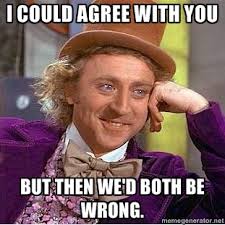Hello, happy new year and welcome back. My you’re looking slim. No, honestly, you can’t tell how many boxes of Quality Street you ate. Please allow me to admire you for a second …

… okay, let us begin the year.
I’m fully immersed in a difficult* rewrite at the moment and the danger with all rewrites (or indeed writes) when they’re taking a long time is that I’ll stray off the point.
Emotionally speaking, that is.
I know the point of the scene and the film and all the themes and character desires and what not … but I’ve found I need to keep reminding myself of the tone lest it wanders off into something too depressing or too silly or too scary or … stuff.

Tone, to me, is the promise of a specific emotion. The tone tells you ‘you will feel mostly this way during this movie’. I think it’s fine to vary the tone from beginning to end, but not to swing wildly across the emotional spectrum from one scene to the next.
A very silly scene about shoes which features a child-rape in the middle and finishes with a slapstick custard pie is jarring. And weird. And just generally horrendous.
I find keeping in mind the emotion I want the audience to experience helps weed out anything which just doesn’t belong.

I’ve done that for a while, but what I’ve noticed recently, what I wasn’t aware I was doing, is that I also keep a second emotion in mind – the lowest point of the main character.
What will the she be feeling at the end of the second act?

How does that contrast with how she’s feeling at the beginning or the tone of the film? Often I find the way she feels at her lowest point is the secret fear which drives her actions throughout. If I know act two is going to conclude with her feeling lost and lonely … then I use that as the fear which colours her decisions throughout.
These two emotions – the tone and the low point should be consistent throughout. That’s not to say the protagonist won’t have fun … but the fear of being alone will always be with her and cause her to make bad choices.

Take Woody in Toy Story as an example: he’s afraid of being replaced, of not being the top toy. The tone is lighthearted, family-friendly comedy – the audience laugh all the way through … but the underlying emotion is fear of being replaced. His low point comes when Woody realises he’s lost the thing he craves because of his actions.
I think.

To be honest, I haven’t really thought it through in any detail. I’ve just noticed it’s what I’ve been doing on the last few scripts to help me stay on target. You may already be doing it. You may think it’s silly and doesn’t work. Or you may think it’s a useful way of thinking about things and incorporate it into your toolbox … it’s up to you.
Yes, it’s a simplistic way of looking at a complex story … but sometimes the simple things help inform and support the finer detail.
When I started this post I had a pithy sign off in mind … but I can’t remember what it was … so here’s a baby eating bacon instead.
* Largely difficult because I’m relocating it from the UK to the US – I didn’t realise how much I didn’t know about America. I mean, it’s all very well knowing what something looks like because you’ve seen it on screen … but what’s it called? That guy who does the thing … what’s his job title in American? And so on. You don’t need to know the names to recognise/understand stuff on screen … doesn’t work in a script.


